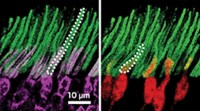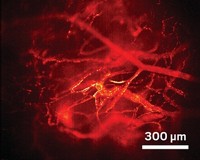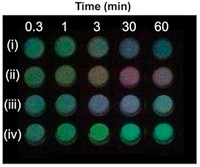Advertisement
Grab your lab coat. Let's get started
Welcome!
Welcome!
Create an account below to get 6 C&EN articles per month, receive newsletters and more - all free.
It seems this is your first time logging in online. Please enter the following information to continue.
As an ACS member you automatically get access to this site. All we need is few more details to create your reading experience.
Not you? Sign in with a different account.
Not you? Sign in with a different account.
ERROR 1
ERROR 1
ERROR 2
ERROR 2
ERROR 2
ERROR 2
ERROR 2
Password and Confirm password must match.
If you have an ACS member number, please enter it here so we can link this account to your membership. (optional)
ERROR 2
ACS values your privacy. By submitting your information, you are gaining access to C&EN and subscribing to our weekly newsletter. We use the information you provide to make your reading experience better, and we will never sell your data to third party members.
Analytical Chemistry
Patent Picks: Quantum Dots
A look at recent patenting activity in medical applications of quantum dots, brought to you by C&EN and CAS
by Science, Technology & Education Department
April 27, 2015
| A version of this story appeared in
Volume 93, Issue 17
Jump to Topics:
- Graphene Replaces Heavy Metals In Dots
- Dots Detect Biomarkers
- Dots May Improve Sunscreen

Shine a light on quantum dots, and depending on their exact size, the tiny semiconducting particles flicker a very specific color. This characteristic is what makes them attractive for use in display screens. But because of their small size and optical properties, quantum dots are increasingly being eyed for use in cell imaging, biomarker detection, and personal care products, according to Chemical Abstracts Service’s databases. Here, we highlight three emerging medical applications.
When scientists first attached green fluorescent protein (GFP) to a biomolecule of interest, they revolutionized the way proteins and other molecules are tracked in cells. But GFP’s fluorescence isn’t always stable, making long-term cell imaging difficult. Quantum dots, which are bright and have good photostability, are an alternative, but they have drawbacks too. Many quantum dots contain toxic heavy metals that might harm cells, and the dots themselves are often larger than the proteins to which they’re attached, potentially affecting protein function. To address these issues, researchers at Nanyang Technological University in Singapore, led by Peng Chen, have developed nontoxic graphene quantum dots: single graphene flakes with a diameter of about 2 nm, modified to readily bind biomolecules for imaging applications. The team reports labeling human insulin with these “dots” and tracking the peptide’s activity in fat cells (US 20150064720). Chen believes that his group’s graphene dots, which have not yet been commercialized, may help clarify details of insulin’s biochemical pathway in the body.

Current methods for diagnosing diseases in their earliest stages, such as immunoassays or mass-spectrometry-based techniques, are not always reproducible enough to accurately detect small amounts of disease-related biomarkers. Nanosensors that are in development are also not sensitive enough. Kwan Hyi Lee and coworkers at Korea Institute of Science & Technology have designed a system they hope will overcome these limitations: a genetically modified T7 bacteriophage connected to a single antibody on its head and a single quantum dot on its tail (US 20150044665). The researchers selected bacteriophages, which are viruses that infect bacteria, because of the ease with which they’re modified. Each of the team’s new bacteriophage conjugates binds to only one biomarker via its antibody, so the exact amount of that biomarker can be detected by calibrating a detector and then measuring quantum dot absorbance. Using this system, the researchers were able to detect biomolecules down to picomolar concentration—an order of magnitude better than most nanosensors.
↑ Top
Jump to Topics:
- Graphene Replaces Heavy Metals In Dots
- Dots Detect Biomarkers
- Dots May Improve Sunscreen
Patent Picks is a collaborative effort by C&EN and CAS. This feature reports on trends CAS scientists observe from patents in CAS databases. Patents now generate more than 70% of the new substances appearing in the literature.
To produce vitamin D, an important nutrient, the body needs sunlight. But research has shown that sunscreens with a high sun protection factor (SPF) can dramatically reduce the levels of vitamin D a person makes by blocking ultraviolet radiation. On the other hand, SPF formulations can prevent detrimental UV effects such as sunburn and skin cancer. Now, scientists at biotech firm Nanoco Technologies, in England, have developed a new sunscreen that blocks harmful UV rays shorter than 290 nm and longer than 315 nm, allowing some radiation through in the range 290–300 nm—the “sweet spot” for vitamin D synthesis (US 20150079188). The cream-based formulation contains the compound avobenzone, which absorbs so-called UVA wavelengths longer than 315 nm, and coated or encapsulated quantum dots, made from materials such as zinc oxide, that block so-called UVC radiation below 280 nm. The team hopes that the benefits of blocking DNA-damaging UVA radiation from the sun and carcinogenic UVC radiation from fluorescent bulbs will outweigh the transmission of a minor amount of so-called UVB radiation, which can cause sunburn.





Join the conversation
Contact the reporter
Submit a Letter to the Editor for publication
Engage with us on Twitter